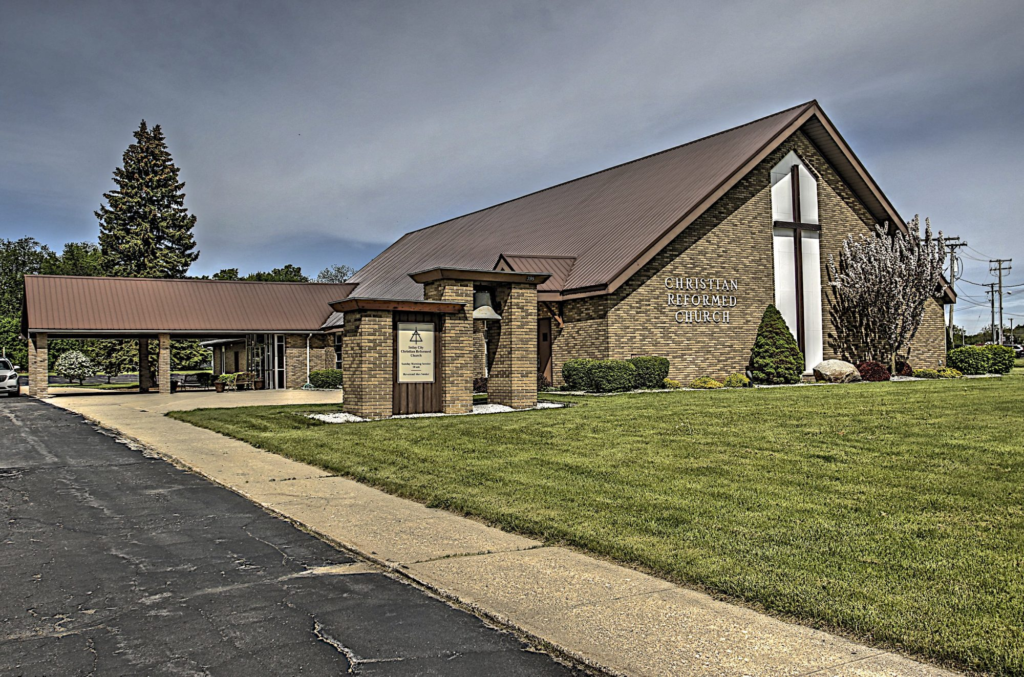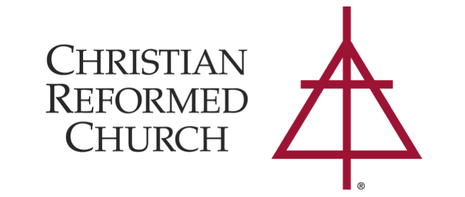The Christian Reformed Church (CRC) recently faced a big question about its stand on biblical sexuality. The decision surprised many and led to disagreements within the group. This event showed that the CRC struggles with several deep problems and controversies.
The CRC is quite big, with 200,000 members in 1,000 churches in the U.S. Yet, it faces issues inside. For almost 30 years, a hot topic has been about allowing women to be deacons and elders. Most CRC churches have started to accept this change.
But not all changes are easily accepted. A number of churches broke away in 1996 to form the URCNA. This split underlines the struggles within the CRC, echoing larger issues that are hard to overcome.
The CRC is also dealing with different views by age. Older members often want to be more inclusive, while younger ones prefer traditional beliefs. New conservative leaders add layers to these debates, making them more complex.
Additionally, the CRC faces challenges with the current cultural shift. Liberal churches are losing members, while more traditional ones are staying strong. This changing trend puts extra pressure on the CRC to balance its beliefs with these cultural shifts.
With falling membership and internal issues, calls for reform are growing louder. The CRC needs to unite on important beliefs, staying true to its core. It must face its challenges, not only in faith but also in how it fits within today’s world.
Explore with us the CRC’s history, its current controversies, and the push for change. See how it’s working to maintain its faith in a world that’s always evolving.
The History and Growth of the Christian Reformed Church
The Christian Reformed Church (CRC) started in 1857 when 130 families left the Dutch Reformed Church. They set up a new branch in North America. This new church aimed to put a focus on strict beliefs and avoid blending into American ways.
In the late 1800s, more Dutch immigrants joined the CRC. This greatly increased its numbers and kept a strong Dutch flavor in the church.
Dr. Abraham Kuyper had a big influence on the CRC in the 19th century. He was a well-known Dutch theologian and leader. He talked a lot about God’s total control and why Christians should get involved with culture.
As the 20th century came, the CRC shifted from using Dutch to English. This was because the people in it were changing, preferring English more.
The First World War made the CRC members blend in more with American society. This shift in their thinking made them feel more part of America.
But the CRC also had its arguments and break-offs. For example, a Calvin Seminary Professor, Ralph Janssen, left after debates on what science supported. Different beliefs caused the Protestant Reformed Church to split off from the CRC too.
The CRC has always had different groups, each with their own ideas about God and society. Some follow old Calvinism closely. Others are more fundamental in their beliefs. And some wanted to be more open and social.
The Christian Reformed Church in North America has seen growth and decline. In 1875, it had only 42 groups meeting. By 1920, that grew to 350, spreading its influence wide.
Between 1949 and 1958, the CRC worked hard to start 120 new churches. They put a lot of money into this. These new places were not just influenced by Dutch culture, making the CRC more diverse.
Internationally, the CRC started doing missions in Africa and Asia in 1819. By 1857, it was focused on reaching out to more people. It added missions in Japan in 1859 and Arabia in 1892, spreading further.
The CRC also built close ties with other churches and groups around the world. In 2002, it joined the World Alliance of Reformed Churches. It has relationships with 39 other church groups. This allows them to share and work together on shared faith issues.
Today, the CRC is a key player in the Christian world. It is the third largest Reformed group in the U.S. It is involved in many efforts to bring different churches together, showing its commitment to peace and understanding.

Current Statistics
As of 2024, the Christian Reformed Church is in North America with around 1,000 groups. It has close to 190,000 members. The CRC is dedicated to its faith and mission showing God’s love. It set a ten-year goal to expand and renew itself in 2003.
The Recent Controversy on Sexuality in the CRC
The Christian Reformed Church (CRC) is going through a controversy on sexuality. The debate centers on how the church views certain sexual acts. This discussion has caused strong reactions and shows the challenge the denomination faces with these issues.
The CRC stated that “unchastity” includes many sexual acts. It’s now calling for discipline in churches that disagree. Many were surprised at the support for this.
A committee made up of twelve people looked into these issues. It included pastors and other experts from various backgrounds. They aimed to have a deep and wide discussion on sexuality.
This isn’t the first time the CRC has dealt with sexuality and biblical meanings. It’s been fifty years since it looked at biblical views on same-sex marriage. The recent debate shows the importance of continuing conversations within the church.
The Neland Avenue CRC in the CRC appointed a deacon in a same-sex marriage. This move was highly debated and questioned the church’s stand on sexuality and church rules.
There were also strong reactions within the CRC. Shortly after someone came out, they were wrongly compared to a child rapist. This shows the need for gentle talks, even when opinions differ.
The CRC is aware of the growing number of LGBTQ people in society. Around 20% of Gen Z adults are LGBTQ. The mental health of LGBTQ young people is worrying, as many have had suicidal thoughts. These facts show how crucial the CRC’s stance on sexuality is.
As the debate continues, more people want discussion within the CRC about same-sex marriage. They point to historic figures like Martin Luther and John Calvin to support their views.
The CRC admits it needs to do better with LGBTQ issues. It has made promises to openly love and support LGBTQ individuals. Yet, doubts about the effectiveness of these promises linger.
Many in the CRC want a re-think on what the Bible says about same-sex relationships. They believe the church needs to be clear, united, and compassionate as it deals with these issues.
The Shift Toward Liberalism in the CRC
The Christian Reformed Church (CRC) has slowly moved toward liberalism in recent years. This change affects its social and theological views. The CRC is known for its diverse members and rich history. Yet, this shift has caused disagreements and controversies.
Currently, the CRC has about 200,000 members in 1,000 churches, making it a major Reformed denomination in the U.S. But, growth has brought a varied view on issues like gender roles and sexuality.
Most CRC churches ordain women deacons, and more than half ordain women as elders. This move shows a commitment to gender equality. It also underlines how societal norms are evolving within the denomination.
Not everyone in the CRC welcomes this move to liberalism. In 1996, 36 churches left to form the URCNA, favoring more traditional beliefs. The URCNA has since grown to 130 congregations and over 25,000 members by 2021.
The generational gap also plays a big role. Younger CRC members, mainly Millennials and Gen Z, tend to have more liberal views. They support traditional beliefs on sexuality. This contrasts with older members who prefer inclusion.
Differences in beliefs also affect CRC institutions, including Calvin University. They’re working to keep unity while addressing both liberal and conservative views. These challenges are part of the broader trend seen in many mainline churches.
Mainline denominations, which often follow liberal views, are losing members over time. In contrast, evangelical churches, known for their orthodox beliefs, are holding steady. This comparison is crucial in understanding the CRC’s current situation.
Exploring the CRC’s roots is essential. It was founded in 1857 by Dutch immigrants looking for a faithful Reformed expression. Over the years, the church has faced many challenges. These include adapting from Dutch to English and dealing with theological disagreements.
The CRC adapted to fit in with American culture. While this was key, it also brought challenges as cultural shifts happened. The CRC’s path towards liberalism shows the struggle between keeping faith and welcoming new ideas.
To sum up, the CRC’s move to liberalism is causing internal division. The tension between different viewpoints, especially on gender and sexuality, is visible. Some churches have even split off to form their own groups. Moving forward, the CRC needs open discussions, careful thought, and a focus on unity. This way, it can address the concerns of its members and stay relevant in today’s world.
The Role of Younger Members in the CRC Controversy
The recent Christian Reformed Church (CRC) controversy showed a key difference between young and old members. Many assume that the young are more liberal, but in CRC, the youth often hold conservative views on biblical sexuality. This shows not all young people follow new trends without question.
The CRC made a significant vote on “unchastity” and the Heidelberg Catechism’s sexual inclusion, sparking big discussions. Older members supported a broader view, while many young people stressed the need to strictly follow the Bible’s teachings.
Youth-led efforts like The Abide Project show younger CRC members are dedicated to traditional beliefs. This work includes mainly 30 to 40-year-old leaders. It shows their strong backing of what the CRC has taught over time.
Different views on biblical sexuality across age groups indicate how changing cultural beliefs affect CRC talks. The US has grown more accepting of LGBT+ ideas, leading to varied opinions in the church on the Bible’s stance.
It’s crucial we see the young people’s conservative views as a drive to stick with CRC’s teachings, rather than avoid tough discussions. They are eager to talk about these tricky topics within a changing world.
Younger members have brought fresh perspectives to the CRC’s debates by standing firm on biblical values. This highlights the debates’ depth and underlines the need for open discussions and respect between church generations.
The Impact of Previous Controversies on the CRC
The Christian Reformed Church (CRC) has faced big controversies, shaping its path and present-day struggles. In the mid-1990s, the CRC shifted its view on women in leadership from complementarian to egalitarian. This led to debates over the direction of the church, especially on topics like homosexuality.
These past controversies have deepened divisions and challenges within the CRC. They show longstanding differences in beliefs, affecting how the church moves forward.
The CRC has changed its view on women leaders and the Lord’s Supper for children in recent years. This marks a move towards being more inclusive. Such changes reflect evolving beliefs within the denomination.
Yet, issues like women in leadership and sexuality still worry the CRC’s future. There’s concern about where the church is heading. Members are dealing with questions about their commitment.
The CRC has historically dealt with tough issues. It values open discussions and studying together. This is seen in its meetings and how decisions are made.
Addressing past controversies stresses the need for ongoing talks, clear theology, and unity. The church must balance its core faith with the needs of today’s society and its members. This approach is vital for the CRC’s future success.
The Influence of Conservative Seminaries and Churches
Conservative seminaries and orthodox churches have greatly affected the beliefs of new pastors in the Christian Reformed Church (CRC). Schools like Reformed Theological Seminary and Covenant Theological Seminary teach theological principles that are very conservative. This aligns with the CRC’s traditional views.
These places have had a big hand in shaping a new conservative wave in the CRC. Pastors from these seminaries strongly support old beliefs about sex and the church’s teaching on faith and morals. They work hard to make sure their flocks understand the Bible well and can answer tough questions.
“I learned so much from places like Reformed Theological Seminary,” Pastor Mark Johnson shares. He’s from Trinity Christian Reformed Church. “They showed me the power of staying close to the Bible in everything. That’s why I stand up for what the Bible says about sexuality in our church.”
These leaders are key in making sure the CRC keeps to its biblical teachings. They are talking about how the CRC’s ways of thinking might be changing and why it’s important to stick to the Bible’s rules. They want the CRC to keep holding the Bible as the most important guide.
Their work is very important because it goes against what the world is saying. Over time, society has become more okay with things like same-sex marriage and other LGBT+ ideas. In this changing world, many people have chosen to follow the more traditional views of these conservative churches, or they’ve left the church altogether.
Having pastors and leaders with conservative training is vital for bringing up a new conservative group in the CRC. Training these leaders well helps the CRC deal with the challenges that come from the world’s changes. It helps them stay true to their deep-rooted beliefs and values.
The Cultural Context and Changing Perspectives
The Christian Reformed Church (CRC) is being influenced by American culture and new views on social issues. This includes thoughts on sexuality and the support for same-sex marriage and LGBT+ beliefs in the U.S. This shift has led to new understandings of what Scripture teaches within the CRC.
Adapting to these changes poses a test for the CRC. It must find ways to honor scriptural guidelines on sexuality while fitting into modern culture. It’s a challenge to hold onto deep belief while also being relevant in today’s world.
The CRC and similar churches have seen some members leave, especially from the more liberal groups. These “faith walkaways” often search for churches that are more traditional or they might distance themselves from religion entirely. It shows the internal struggle people have, trying to keep faith alive with changing times.
“As the world talks more about gender and sexual topics, it’s harder for churches to mix traditional teachings with modern acceptance. The CRC faces these struggles, needing to deal with them to stay meaningful and accomplish its goals.”
The CRC is actively wrestling with societal changes and the effect on its beliefs. It aims to discuss openly, study the Bible, and pray to make the right choices. It values different opinions but understands the talks need to be filled with love and stick to the Bible.
The CRC wants to keep a careful balance, blending with culture without letting go of its teachings. This task involves understanding the Bible’s authority and the complications of today’s society.
Despite the difficulties, the CRC is determined to keep its theological convictions, unity, and strive for improvement. Dealing with the current cultural context and its changing perspectives will be done with intelligence and grace. The goal is to show Christ’s message in a world that keeps changing.
Conclusion and the Need for Reform and Renewal
The Christian Reformed Church (CRC) faces tough times, showing the need for serious change. With issues like talks on homosexuality in 1973 and gender equality today, the CRC is in a critical spot. To stay relevant, it must revisit its core beliefs openly.
Clear theology is key, especially when dealing with today’s problems like climate change and poverty. How the CRC handles these matters will guide its future. It will also define its role in promoting fairness and respect.
A united CRC is vital, much like the early church in Acts 2. Being strong in prayer, teaching, helping one another, and being generous is crucial. This unity and revival are essential for growth and a clear message in today’s world.
Staying true to the Reformation’s spirit, the CRC must face corruption, secular influence, and waning influence. Tackling financial woes, emphasizing its purpose, and doing more in society are steps to a better future. This will help it move past a history marked by splits and discord.
FAQ
What is the Christian Reformed Church?
The Christian Reformed Church (CRC) started in 1857 when Dutch immigrants left the Reformed Church in America. They disagreed on teaching and adapting to American ways. It’s now the third-largest Reformed group in the U.S.
What Is Wrong With The Christian Reformed Church?
Some issues the Christian Reformed Church deals with are about sex based on the Bible, understanding of God’s word, and different opinions, liberal and conservative, inside the church.
How has the recent controversy affected the Christian Reformed Church?
A recent debate about sex and the church’s teachings has surprised and divided the Christian Reformed Church. This issue has shown there are still big challenges and differences among its members.
What is the history and growth of the Christian Reformed Church?
Since 1857, the Christian Reformed Church has had periods of growth and decline. Now, it has about 200,000 followers across a 1,000 church sites.
What is the recent controversy in the Christian Reformed Church about?
The latest debate focuses on how the church sees sex, specifically using the Heidelberg Catechism. Some think “unchastity” includes various sexual acts, which others disagree with.
What does the shift toward liberalism in the CRC mean?
Over time, the Christian Reformed Church has adopted more progressive views, like allowing women in church leadership. This change has caused tensions and splits within the church.
What role has the younger generation played in the CRC controversy?
Recently, younger members in the Christian Reformed Church have shown more traditional views about sex. This goes against the idea that younger people are usually more open-minded.
How have previous controversies impacted the Christian Reformed Church?
Earlier debates, such as the move from seeing men and women’s roles as different to equal, have shaped today’s issues. It has made people question the direction the church is going on various beliefs.
What influence do conservative seminaries and churches have on the CRC?
Conservative schools and orthodox churches, some linked to the Christian Reformed Church, have affected the next generation of church leaders. They’ve helped shape a push for more traditional teachings on sex within the Christian Reformed Church.
How has the cultural context influenced the Christian Reformed Church?
The wider culture, like accepting same-sex marriage, has impacted views in the Christian Reformed Church. It has led to different understandings of the Bible and even caused some people to leave churches with more liberal stances.
Why is reform and renewal needed in the Christian Reformed Church?
The issues within the Christian Reformed Church show a need for change and revival. This means the church must get clear on its teachings, talk openly, and stick to what the Bible says. It’s about making both sides feel heard so the church stays relevant and strong.

Rockin’ the faith, one verse at a time!
Growing up, the Bible’s stories deeply impacted me. Now, with over 15 years of preaching experience, I blend timeless teachings with modern technology, making them relevant for today’s world.
Bible Hub Verse is my platform to share historical insights and thought-provoking articles, exploring both familiar and uncommon Christian topics. My passion is building a welcoming online space for everyone to learn, grow in their faith, and discover the Bible’s enduring message.
Join the journey!
God bless you.





